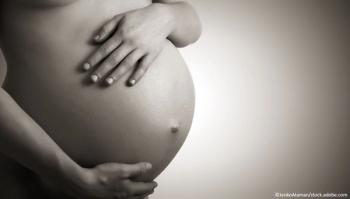
News|Articles|May 14, 2025
Bone Loss Slowed in Women on Med Diet, Exercise Plan: Daily Dose
Author(s)Sydney Jennings
Your daily dose of the clinical news you may have missed.
Advertisement
Patient Care brings primary care clinicians a lot of medical news every day—it’s easy to miss an important study. The Daily Dose provides a concise summary of one of the website's leading stories you may not have seen.
On April 15, 2025, we reported on a prespecified secondary analysis of the PREDIMED-Plus randomized clinical trial published in JAMA Network Open.
The study
Researchers conducted the 3-year, parallel-group study to assess the effects of a weight-loss lifestyle intervention on bone mineral density (BMD), bone mineral content (BMC), and low BMD prevalence.
The study included 924 older adults (mean age 65.1 years; 454 women and 470 men) with metabolic syndrome and overweight or obesity who were part of the larger PREDIMED-Plus trial and had access to dual-energy x-ray absorptiometry (DXA) measurements at 4 Spanish centers. The analysis was conducted from September 1 to October 30, 2024.
Participants were randomly assigned to either an intervention group that followed an energy-reduced Mediterranean diet with physical activity promotion (n=460) or a control group that received advice to follow an *ad libitum* Mediterranean diet without specific physical activity recommendations (n=464).
Researchers measured BMD (total femur, lumbar spine (L1-L4), and femoral trochanter) and total BMC using DXA at baseline and at 1 and 3 years of follow-up. T scores from BMD variables were determined, and osteopenia or osteoporosis status was defined as low BMD.
The findings
After 3 years, the intervention group showed a significant protective effect on lumbar spine (L1-L4) BMD compared to the control group (between-group differences, -0.1 [95% CI, -0.8 to 0.8] g/cm² after 1 year and 0.9 [95% CI, 0.1-1.8] g/cm² after 3 years; overall P =.05). This beneficial effect was particularly pronounced in women (between-group differences, -0.1 [95% CI, -1.3 to 1.1] g/cm² after 1 year and 1.8 [95% CI, 0.6-2.9] g/cm² after 3 years; overall P =.005) but was not observed in men.
Total body weight decreased by 3.0% over three years in the intervention group compared with 0.7% in the control group, with overall 3-year differences in changes in total body weight between groups being significant (between-group difference, –2.2 kg [95% CI, –2.7 to –1.6 kg]; overall P <.001).
Authors' comments
"The beneficial positive effects in women observed from this weight-loss lifestyle intervention hold considerable promise and these results are of potential public health and clinical importance, given the high prevalence of osteoporotic fractures in aged populations with excess weight, especially women, and their substantial burden on public health systems. Weight-loss lifestyle interventions with longer follow-up are warranted in the future to confirm our results in relation to bone health."
Newsletter
Enhance your clinical practice with the Patient Care newsletter, offering the latest evidence-based guidelines, diagnostic insights, and treatment strategies for primary care physicians.
Advertisement
Advertisement
Advertisement
Trending on Patient Care Online
1
Caffeinated Coffee Linked to Lower Atrial Fibrillation Recurrence in First-of-its-Kind Randomized Clinical Trial
2
FDA Approves First New IPF Treatment in More Than a Decade: Daily Dose
3
CDC Updates Website Page to Implicate Vaccines in Autism
4
Two-Thirds of Pregnancies Have Weight Gain Outside Recommended Ranges, Meta-Analysis of 1.6 Million Women Finds
5



























































































































































































































































































